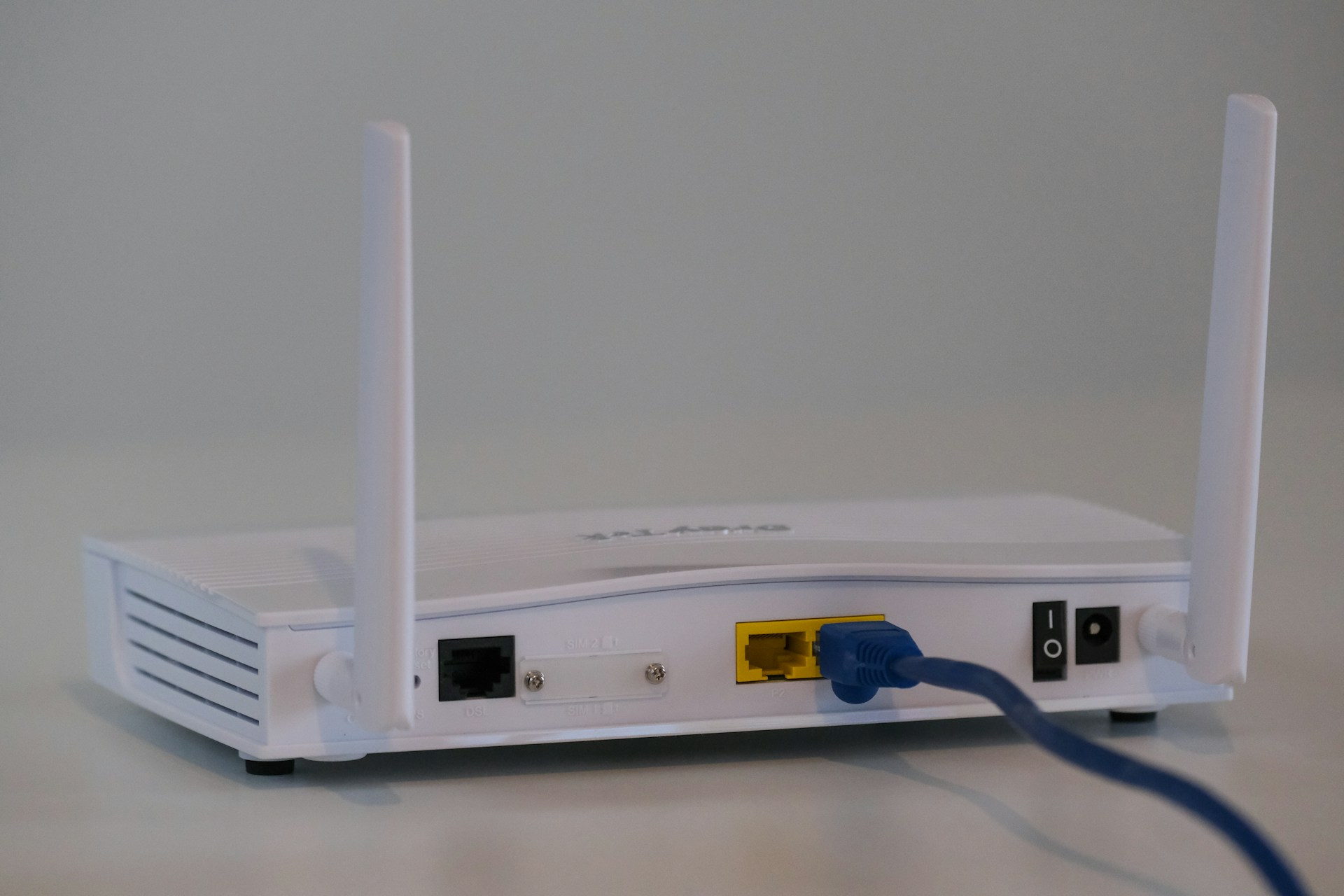How to Optimise Bandwidth and Latency with IPLC for Global Business Applications?
-
January 28, 2025
-
9 min read

It is a hyper-connected world today where the stakes for global businesses are high. A delayed transaction, a lagging video call, or a sluggish cloud application can cost not just productivity but reputation. With sprawling operations spanning time zones and geographies, ensuring seamless data flow is more than a convenience nowadays.
However, challenges like unpredictable latency and bandwidth limitations persist, undermining efficiency where it matters most. For organisations aiming to rise above these limitations, International Private Leased Circuits (IPLC) offer a game-changing solution.
This article explores all about IPLC bandwidth optimisation to ensure that your global applications operate with precision, speed, and resilience in an interconnected world. Let’s get into strategies that redefine network performance.
Introduction to IPLC
IPLC is a dedicated telecommunications link that connects two or more locations across different countries. It is a point-to-point connection established through undersea cables or terrestrial networks, offering a private and secure channel for transmitting data, voice, or video traffic.
Key Features of IPLC
- Dedicated Connection: Unlike shared office internet connections, IPLC offers a fully dedicated link, ensuring consistent bandwidth and performance.
- High Security: The closed-circuit nature of IPLC eliminates exposure to public internet threats, making it ideal for sensitive business applications.
- Reliable and Consistent Performance: With no congestion from external users, IPLC provides reliable service for real-time applications like VoIP and video conferencing.
How does IPLC Work?
IPLC networks are typically structured using point-to-point or multipoint configurations. These circuits are leased from telecom providers who maintain the physical infrastructure, such as fibre optic cables. Organisations use IPLC for smooth communication between geographically dispersed branches, data centres, or global teams.
Applications in Global Business
IPLC is widely used by multinational corporations, financial institutions, and media companies for purposes such as cross-border file transfers, international data backups, and real-time communication. Its robust capabilities make it a critical asset for organisations prioritising reliability and speed in their global operations.
The reliability and consistent performance of IPLC come at a higher cost compared to shared services like MPLS or VPN. However, for businesses that prioritise secure and dependable communications across continental distances, the investment in IPLC can be justified by its substantial benefits.
Importance of Bandwidth and Latency in Global Applications
Bandwidth refers to the maximum data capacity of a network, measured in bits per second (bps). Latency is the time it takes for data to travel from one point to another, typically measured in milliseconds (ms). Both optimised bandwidth and reduced latency matter to make sure optimal performance in global business applications.
Businesses use IPLC bandwidth optimisation so that large volumes of data can be transmitted without bottlenecks. Low latency minimises delays, which is vital for time-sensitive applications like financial trading, video conferencing, or live streaming. Any lag or jitter in communication can lead to operational inefficiencies, reduced productivity, and even financial losses.
Steps for IPLC Bandwidth Optimisation
Efficient and reliable data transmission depends on IPLC bandwidth optimisation through the application of advanced technical strategies. Here’s a detailed breakdown:
Evaluate Bandwidth Requirements
Start by conducting a thorough assessment of your network’s bandwidth needs. Use tools like network analysers and bandwidth monitoring software to evaluate the volume of traffic and the types of applications in use.
Applications like video conferencing, large data transfers, and real-time analytics demand higher bandwidth, while email and routine web access require less. Forecast future needs based on business growth and application upgrades to make sure your network can scale.
Implement Quality of Service (QoS) Protocols
QoS is essential for prioritising network traffic. Configure your network devices (routers, switches) to categorise traffic based on application type and priority.
For instance, allocate higher bandwidth to latency-sensitive applications like VoIP and video conferencing while deprioritising background processes like large file downloads. This helps critical applications maintain optimal performance even during peak usage.
Optimise Data Transmission with WAN Acceleration
Deploy WAN optimisation techniques, such as deduplication and caching. Deduplication reduces repetitive data transmissions while caching stores frequently accessed data closer to the user, enhancing both IPLC bandwidth optimisation and latency reduction.
Utilise VLANs for Traffic Segmentation
Virtual Local Area Networks (VLANs) can be employed to segment traffic. Assign separate VLANs for voice, video, and data traffic to reduce contention for resources.
VLAN tagging means that high-priority traffic, such as video calls, is handled with dedicated bandwidth, improving overall network efficiency.
Monitor and Analyse Network Performance
Use network performance monitoring tools to track real-time bandwidth usage, identify bottlenecks, and detect unusual patterns. Analytics tools provide insights into underutilised bandwidth or excessive usage, enabling administrators to reallocate resources efficiently.
Collaborate with Your Service Provider
Work with your IPLC provider to customise your bandwidth plan. Opt for scalable bandwidth options that can adapt to fluctuating demands. Consider burstable bandwidth solutions to handle temporary surges without compromising overall performance.
Invest in High-Performance Hardware
Just make sure your routers, switches, and other network equipment are capable of handling high-speed data transmission. Outdated or underperforming devices can throttle bandwidth, undermining the benefits of an IPLC.
By employing these technical measures, businesses can achieve effective IPLC bandwidth optimisation without much effort.
Strategies for Reducing Latency with IPLC
Reducing latency with an IPLC requires technical precision to allow the swift transmission of data across geographically distributed locations. Here are key strategies to minimise latency effectively:
Optimise Route Selection
Higher latencies—often caused by inefficient routes—can lead to slower application performance, disrupted video conferencing, or delays in financial transactions, potentially costing businesses thousands of dollars in productivity losses. Undersea cable systems and terrestrial paths with minimal detours are critical to reducing latency.
IPLCs significantly reduce latency by removing unnecessary network hops. Further optimisation can be achieved by leveraging bypass solutions, such as Airtel’s robust network infrastructure and vast global partner ecosystem.
Airtel’s routing solutions offer the advantage of a minimum of 3 alternative routes per destination. This helps bypass congested and geo-politically risky routes like the Red Sea, Egypt, Strait of Malacca, and the South China Sea, when required, thus optimizing network efficiency and reliability with minimal cable overlap.
Advanced tools, including Airtel’s route optimisation algorithms, help analyse and identify the shortest physical paths for data transmission, providing businesses with a competitive edge through faster and more reliable connectivity.
Utilise Low-Latency Protocols
Traditional protocols like TCP/IP often introduce latency due to acknowledgement processes and retransmissions. By implementing optimised protocols such as TCP Fast Open or Multipath TCP, businesses can accelerate data transfer while maintaining reliability.
These advanced protocols streamline data packets, reducing the time required for data acknowledgement and error correction.
Invest in High-Performance Networking Hardware
Latency can be influenced by outdated or underperforming network devices. Upgrade to low-latency routers, switches, and network interface cards (NICs) that support high-speed packet forwarding and minimal processing delays. Hardware with advanced features like buffer management and load balancing can further optimise performance.
Implement Edge Computing
Edge computing processes data closer to the source, reducing the round-trip time to centralised servers. By integrating edge nodes at strategic locations in your IPLC infrastructure, latency for critical applications can be reduced, ensuring faster response times for real-time data processing.
Deploy Content Delivery Networks (CDNs)
For data-heavy applications like media streaming or e-commerce, CDNs can cache content closer to end users. This minimises the need for repeated long-distance data transmissions, pairing seamlessly with IPLC to maintain consistent low-latency performance.
Monitor and Mitigate Jitter
Jitter, the variation in packet delivery times, disrupts latency-sensitive applications like VoIP and video conferencing. Use tools to monitor jitter and implement technologies such as traffic shaping or jitter buffers to stabilise packet flow and keep consistent delivery.
Regular Performance Testing
Conduct periodic latency tests to identify delays caused by congestion or hardware inefficiencies. Employ diagnostic tools to analyse round-trip times (RTT) and take corrective actions.
By implementing these strategies, businesses can unlock the full potential of IPLC to deliver faster and more reliable connectivity for global applications.
Secure, Fast, Reliable: Airtel Dedicated Internet Leased Lines Advantage
Airtel’s Dedicated Internet Leased Lines offer a robust solution for businesses requiring reliable global connectivity. Choosing Airtel as an IPLC service provider means getting several advantages, driven by its extensive network and cutting-edge infrastructure.
Airtel’s IPLC leverages a global network spanning over 50 countries and 5 continents. With more than 34 submarine cables and 7 cable landing stations, it guarantees robust global reach and minimal latency. The service supports flexible bandwidth scaling from 2 Mbps to multiple Tbps, enabling businesses to adapt seamlessly to growing connectivity demands.
Bypassing traditional routes and leveraging Airtel’s advanced route optimisation capabilities ensures faster data delivery. This is particularly crucial as research indicates that even a 100-millisecond delay in page load time can reduce conversion rates by 7%, and latency-related disruptions can cost businesses significant losses in productivity and revenue.
Key features of Airtel’s IPLC solutions include guaranteed bandwidth for uninterrupted operations and dynamic load balancing for optimal performance. Airtel’s infrastructure guarantees low latency, which is critical for applications like VoIP, video conferencing, and data-intensive workloads. Additionally, Airtel provides enterprise-grade support with 24/7 operational assistance, ensuring consistent network reliability.
By choosing Airtel, businesses gain access to a cost-effective yet high-performing IPLC solution that empowers them to expand into new markets, enhance global collaboration, and future-proof their infrastructure.
Key Takeaways
IPLC bandwidth optimisation and reduced latency are crucial for global businesses aiming to stay competitive in today’s digital-first world. By adopting advanced solutions like IPLC, companies can achieve seamless, secure, and high-speed connectivity that drives efficiency and enhances collaboration across borders.
Whether it is powering real-time communication, enabling robust cloud operations, or facilitating large-scale data transfers, the right network infrastructure makes all the difference.
For businesses seeking a reliable partner to enhance their connectivity, Airtel B2B’s Dedicated Internet Leased Lines offer unparalleled performance, security, and scalability. Backed by a global network footprint and 24/7 support, Airtel helps your enterprise stay connected without any compromises.
 Share
Share









